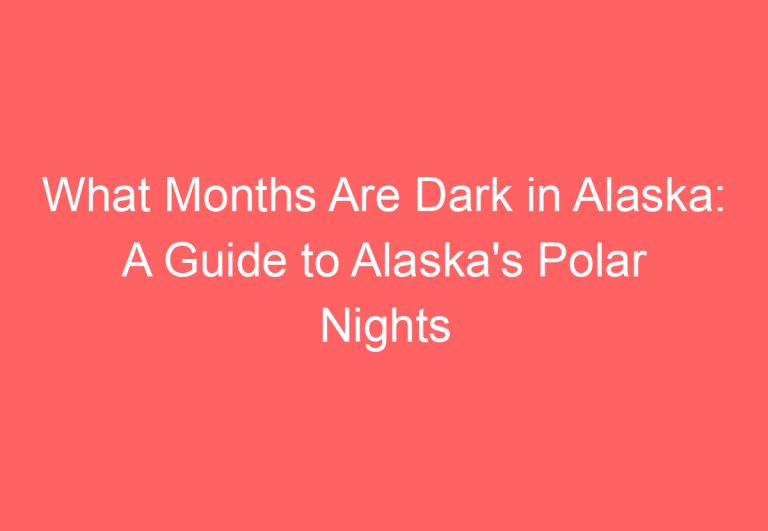How Many Russians Live in Alaska: A Demographic Overview
As of 2020, Alaska’s population was approximately 733,391, and the state is known for its diverse population. Among the many groups that call Alaska home are Native Alaskans, immigrants, and oil industry workers from other parts of the country. However, one group that has a significant presence in Alaska is the Russian population.

According to Zip Atlas, the percentage of the Russian population in Alaska varies by city. For example, the city of Sitka has the highest percentage of Russian residents at 12.5%, followed by Kenai at 9.5%, and Kodiak at 8.2%. Other cities with notable Russian populations include Anchorage, Fairbanks, and Juneau.
It’s worth noting that Russian colonization of Alaska dates back to the 18th century when the Russian Empire claimed northern Pacific Coast territories in the Americas. While the Russian presence in Alaska has evolved over time, the influence of Russian culture is still evident in some parts of the state. In this article, we will explore how many Russians live in Alaska today, their history in the state, and the impact they have had on Alaska’s culture.
Historical Context of Russians in Alaska

Early Russian Settlements and the Russian-American Company
The history of Russians in Alaska dates back to the late 18th century when Grigory Shelikhov, a Russian fur trader, founded the first permanent Russian settlement in Alaska on Kodiak Island in 1784. The Russian-American Company, established in 1799, was a joint-stock company that was granted a monopoly on trade in Alaska by the Russian Empire. The company played a significant role in the expansion of Russian settlements in Alaska and the development of the fur trade.
The Russian Orthodox Church and Cultural Influence
The Russian Orthodox Church played a crucial role in the cultural influence of Russians in Alaska. The church was established in Alaska in 1794, and over time, it became a central part of the lives of many Russian settlers. The church’s influence extended beyond religious practices and included cultural traditions such as food, music, dance, and art.
Treaty of Cession and Transition to American Governance
In 1867, the Treaty of Cession was signed, and Alaska was sold to the United States for $7.2 million. The transition of Alaska to American governance marked the end of Russian rule in Alaska. However, the Russian Orthodox Church and its cultural traditions continued to thrive in Alaska. The Russian population in Alaska declined after the sale of Alaska, but a small population of Old Believers, a sect of the Russian Orthodox Church, still resides in Alaska today.
Overall, the history of Russians in Alaska is a fascinating tale of exploration, settlement, and cultural influence. The Russian-American Company played a significant role in the expansion of Russian settlements in Alaska and the development of the fur trade. The Russian Orthodox Church and its cultural traditions also played a critical role in the lives of many Russian settlers. Although the sale of Alaska marked the end of Russian rule, the influence of the Russian Orthodox Church and its cultural traditions continued to thrive in Alaska.
Contemporary Russian Population in Alaska

Demographics and Distribution
As of the 2020 U.S. Census, there were approximately 25,000 people of Russian descent living in Alaska. This accounts for around 3.4% of the state’s total population. The majority of the Russian population in Alaska resides in the cities of Anchorage and Fairbanks, with smaller communities scattered throughout the state.
Cultural Preservation and Community Life
The historical and cultural ties between Alaska and Russia contribute to the presence of Russian communities in the state. Russian Old Believers, a religious group that split from the Russian Orthodox Church in the 17th century, also have a significant presence in Alaska. These communities have worked to preserve their culture and traditions through language, music, and dance.
Fishing is a major industry in Alaska, and many Russian immigrants have worked in the fishing industry throughout history. Some of the first Russian immigrants to Alaska were brought over to work in the fur trade in the 18th century. However, disease and conflicts with native Alaskans and Aleuts led to a decline in the Russian population in the 19th century.
Today, the Russian population in Alaska continues to thrive and contribute to the state’s cultural diversity. Intermarriage with Alaska Natives and other immigrant groups has also led to a blending of cultures. The University of Alaska offers programs in Russian language and culture, further highlighting the importance of the Russian community in the state.
Overall, the Russian population in Alaska remains a small but significant part of the state’s demographic makeup. Their contributions to the fishing industry, cultural preservation, and community life continue to shape the state’s history and identity.
Frequently Asked Questions

What is the population of Russian descent in Alaska?
As of the 2020 U.S. Census, there were approximately 25,000 people of Russian descent living in Alaska. The historical and cultural ties between Alaska and Russia contribute to the presence of Russian communities in the state.
Which U.S. state has the highest population of Russian immigrants?
Alaska has the highest population of Russian immigrants in the United States. This is due to the state’s proximity to Russia and the historical ties between the two regions.
How many Russian-speaking communities are there in Alaska?
There are several Russian-speaking communities in Alaska, but the exact number is not known. Many of these communities are located in rural areas, where Russian is still spoken as a first language.
What is the history of Russian settlements in Alaska?
The history of Russian settlements in Alaska dates back to the 18th century, when Russian fur traders first arrived in the region. The Russians established several settlements in Alaska, including the capital city of Sitka. The Russian presence in Alaska lasted until 1867, when the United States purchased the territory from Russia.
How does the Russian population in Alaska compare to other ethnic groups?
The Russian population in Alaska is relatively small compared to other ethnic groups in the state. According to the 2020 U.S. Census, the largest ethnic group in Alaska is White, followed by Native American and Alaska Native.
What are the significant cultural impacts of the Russian community in Alaska?
The Russian community in Alaska has had a significant impact on the state’s culture, particularly in the areas of art, music, and religion. Russian Orthodoxy remains a prominent religion in Alaska, and many Russian traditions and customs are still practiced in the state today.






